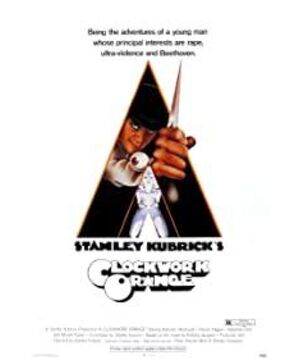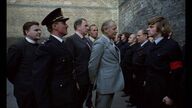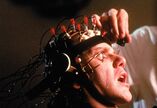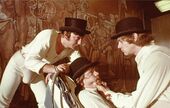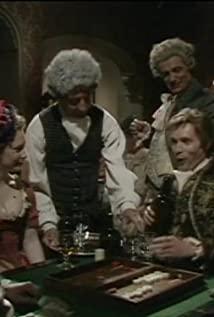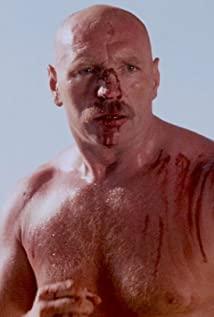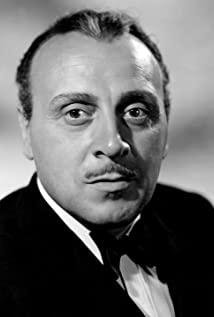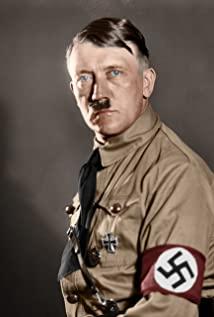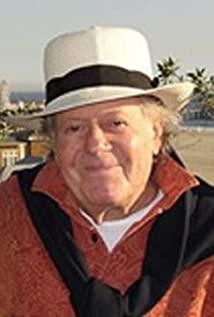a. Brief introduction of the story
"A Clockwork Orange" is a shocking cult film by the film master Stanley Kubrick in 1971. It is adapted from the novel of the same name by the British writer Anthony Perkins. The background of the movie's story is set in the near future, telling a story of his experience from the protagonist Alex's first-person perspective. Alex led a few idle and violent teenagers like him to have fun everywhere. They first beat a tramp, and then found a group of gangsters who wanted to rape a young girl, beat them up, and drove them all the way. He flew into a country house on the excuse of entering the house to gang rape and mutilate the hostess. The next day, Alex taught him a meal to establish his prestige. In the evening, several people wanted to enter the house of the rich woman "Mrs. Cat" who lived alone in the same way. "Mrs. Cat" called the police and Alex entered the house. After a fight, Alex missed the "Mrs. Cat" and killed him. When he was about to flee, he was beaten unconscious on the spot in retaliation by his subordinates and was arrested by the police. After being imprisoned, Alex desperately wanted to shorten his sentence, so he volunteered to be an experiment called "Ludvik" project. This plan was invented to reform criminals. The principle is to allow experimenters to watch vicious movie clips of violent fornication and fascism while injecting certain potions to cause conditioned nausea. The experiment was very successful, and Alex has since become a "good man" who doesn't fight back or scolds. However, Alex, who had been harmless in his return to society, was abandoned by his family's parents. At the same time, he was avenged one by one from the victims of his evil deeds. In the end, Alex was unbearably tortured and chose to jump off the building to end his life. Unexpectedly, when the suicide attempt was in the hospital, the previous senior government officials asked Alex for political purposes to cooperate as a model of successful treatment, and Alex was pleased to enter into a dirty deal with him.
two. The post-modern video style
mainly analyzes the photography and lighting art of "A Clockwork Orange" that mixes expressionist styles, as well as the stylized film rhythm, full of change and rhythm. These are also the essence and focus of the analysis of the artistic style of the entire film.
The video style of the opening paragraph is undoubtedly a strong shocking effect to the audience, and at the same time established the tone and style of the film. The film first starts with a close-up of Alex’s face. The exaggerated, weird look, the sensual and evil look is chilling. After nearly 10 seconds of freeze, the camera starts to pull back, and then the whole background-Colo The Wa Milk Bar is slowly presented, and the lens shows the extremely black and evil sexually suggestive scenery of the Milk Bar in a symmetrical composition, coupled with a stylized monologue, to establish the post-modern image style of the film in one fell swoop.
Next, the tramp was beaten up for a while. First, a close-up of the tramp below his head (including the wine bottle) to show his downfall, and then a pull-up shot to show the character's environment-in a dead end at night, the light is dim, and the old man is in despair. . Then there is a flashing figure from the right side-before you see the person, you see the shadow first. The four human figures covered almost the entire alley due to the light—including the elderly. As the figures approached, the picture was extremely suppressed. Then the camera turned in the opposite direction, and the four young people walked slowly.
The fight with Billy Boy started with a close-up of an oil painting. Kubrick always started the scene with a close-up. I guess it was to make the audience unable to see the background and guess what happened next. At the same time, it has a modern style. The close-up of the styling enhances this weird and crazy atmosphere. Then the camera was pulled back and moved down at the same time, only to discover that the original oil painting and another sculpture were on the top of the opera house. On the dilapidated stage of the opera house, the Billy boy was about to gang-rape a girl. The camera turns to the other side, and in the shadows, four people can be seen slowly walking out of the shadows. The lights here once again feel depressing and even mysterious. The subsequent fights were cut quickly and sharply on the video, accompanied by marches and performative movements of the characters, like a post-modern style drama performance, full of violent aesthetics.
Afterwards, the four of Alex drove all the way, using strong light to hit the characters' faces, showing their hysterical crazy state. After Alex returned home, the video was very exciting. With the sound of Beijiu music, the mural on the wall of the room and the close-up of the snake were first followed by a quick cut of a group of close-ups of various parts of the nude Jesus statue. , The next is a close-up of Alex's face. At this time, he was convulsing almost madly. So the scene enters Alex’s spiritual world from reality. The scenes of people being hanged, atomic bombs, explosions, volcanic eruptions, falling rocks and close-up cross-editing of Alex’s vampire-like crazy and evil smile scenes Show it out, vividly showing the character's inner madness, anti-social psychological characteristics such as violence and pornography.
The feature of the next video is the change in the rhythm of the video narrative. First, a quick shot is used to show the scene of Alex having sex with two girls, accompanied by a marching song, making the whole picture very funny, without the temptation of a sex scene at all. This is the director's mockery of contemporary young people's open and casual concept of sex, and the performance of their sex is like a clown's performance. Next is the lesson of Alex by the river to his comrades. Here, slow motion is used, and classical music is also used. In violent scenes, the expressions of the characters are close-up, the movements of the characters are played slowly, and the real sound is eliminated and amplified. The sound of this violent scene makes this violent scene extremely expressive, and the contrast between the fast and the slow rhythm not only gives the film a symmetrical beauty, but also reflects the great difference between the post-modern image narrative style and the traditional film.
In the subsequent murder scene of Mrs. Cat, Kubrick used a handheld camera to show the chaos of the fighting scene when depicting the fighting scenes of the characters. At the same time, a large number of subjective shots appeared, through which the expressions of the characters were displayed, which made the atmosphere more tense. The subjective scene when Mrs. Cat was killed by the "sexual device" is edited together with an oil painting (a huge open mouth of a woman), which not only cleverly avoids the direct representation of the bloody scene, but also reflects the film's postmodern ridicule and nonsensical style.
In the prison section, the director used a large number of depth-of-field lenses and panoramic images to show the repressive and enclosed environment in the prison. The most obvious one was a depth-of-field lens in the prison corridor. Kubrick's love can be seen everywhere in the corridors of "The Shining" that show the oppressive environment. Later, Alex’s two performances before he was released from prison mostly used subjective shots from a low elevation angle. Alex squatted on the ground and insulted others. At this time, he lost the ability to do evil after transformation and became extremely insignificant. Even helpless and pathetic. The close-up of the nude girl’s expression on the characters in the theater after slowly appearing in the dim light, and the close-up of the nude girl’s body, shocking people as if a fairy descended from the earth, with the weird and mysterious background music, and the blurred light seems to be a kind of mysterious The religious ceremony is underway.
Some of the images at the back of the film are not as distinctive as the previous ones. Only the close-up of the old man's expression in the Home section and the ending show that the scene of people meeting in the paradise that Alex imagined is unforgettable. The thinking about social ethics and human nature brought to people by this passage may be even more shocking.
In short, the entire film image is very gorgeous, like a visual feast, which well reflects Kubrick's pursuit of visual style. His film may be incomprehensible because of its obscurity, but the pictures in it will definitely make you unforgettable. Through various angles of photography, expressionist lighting, and changes in the speed of image narration, the entire film has become the best expression of postmodernist artistic style in the film.
three. Post-modern art style
Post-modern style in artistic design is another key to the film’s unique characteristics. Characters’ makeup, costumes, styling, various stylized props, and all kinds of richly colored sets, both surrealist style and expressionist style.
First of all, return to the Kolowa milk at the opening, let us focus on the character and the setting. According to Kubrick himself, the entire film was basically shot on location, with only a few scenes from professional studios, including this temporary milk bar. "I have seen a sculpture exhibition in which women’s fingers are displayed as furniture. From there, I got an inspiration to form a human-shaped table with glass filament and put it in a milk bar. John Barry in his later years, our film production designer , He designed this scene. In order to get the exact position of these human shapes, John took photos of the same human model from as many angles and shapes as possible," Kubrick said. Kubrick’s pursuit of visual perfectionism has created a classic scene that is eternal in movie history: Alex’s half of false eyelashes, full of unruly and evil eyes, and blood-red eyeball decorations on the cuffs. He and his three accomplices were sitting in a decadent milk bar, drinking psychedelic milk, holding a long black stick in their hands, and wearing underwear to show their sexiness. And the milk bar is full of naked white women, with a variety of strong colors and different styles of hair, placed in various positions-some lying up, some kneeling on the counter, their nipples are out Milk mouth. The background is a pure black wall contrasted with white text with weird writing. The artistic design of the entire scene is not only strong and chilling, but also in the annals of celebrity history because of its bold and wanton style.
Let's go back to Alex's home again, the setting for this segment is also expressive. His bedroom full of unique and weird decorations was created by himself and belongs to his territory alone. He keeps a large python, his favorite portrait of Beethoven is hung on the wall, and there is a nude woman with acupuncture points. Four statues of Jesus are connected together, with thorns on their heads, crazy expressions, blood stains everywhere, and furniture and wallpapers full of rich and lewd colors. Out of the bedroom, the same post-modern decoration in the living room, mother's gaudy dress, exploding colorful hair. All these sets, makeup, and styling create a future surreal family environment, which is in line with the background setting of the near future in the original book.
When it comes to post-modern scenes, I have to mention the places where two tragedies occurred-Home and Mrs. Cat's home. The hostess’s gorgeous red tights in the Home, the white purple sofa on the inside resembling a submarine, a strange gray statue, huge portraits of various plants painted on the wall, and the host’s messy hairstyle. Prominent eyeballs, brightly colored clothes... What is more obvious is that Mrs. Cat’s home is undoubtedly like a post-modern art gallery: various sexually dark portraits, that huge silver-white "penis", " "Mrs. Cat" has dark red hair, green tights, creamy white stockings, and rich makeup on her face.
There are countless decorations in post-modern style throughout the movie, and the art effect is excellent. These sexual and violent set decorations give the whole movie a beautiful and bizarre visual effect, creating a future world that transcends real life. These decorations remind people of the description in "The Flower of Evil". The temporarily forgotten moral standards of beauty and ugliness make violence and pornography have a sense of beauty and become a kind of art. In these settings, violence and pornography have nothing to do with morality, and become a swaying group of aesthetics, full of performance, dance, and drama, highlighting the postmodern nihilistic world outlook and values of the characters in the film.
Four. When
mentioning Kubrick’s films in post-modern soundtrack style , and mentioning "A Clockwork Orange", he has to mention the iconic soundtrack of Kubrick. He rarely composed music specifically for the film, and almost exclusively uses classical orchestral music, which is reflected in "A Clockwork Orange." This is particularly evident in "A Clockwork Orange." Kubrick explained: "Unless you need a modern soundtrack, I like to use orchestral music very much, both in the past and in the present. The music can use the original or adapted version, just like Bedo in many scenes in "A Clockwork Orange". Fen’s music. But I don’t think it is necessary to hire a composer. No matter how good he is, he is not Mozart or Beethoven. You have such a wide choice of classical music, including peers and avant-garde music. This allows you to There are many opportunities to experiment with various music in the initial editing stage, and sometimes edit the film to match the music. This is actually not easy to do in an ordinary lens set." In "A Clockwork Orange", just talk about classical The use of music is inadequate. The most important thing is the combination of these music and pictures—sometimes it’s the opposite of sound and picture, but more often it’s the opposite of sound and picture, which makes the whole film unique, but also very disruptive and innovative. sex.
In the opera house, in the melody of Rossini's opera "The Magpie" overture, the Billy boy is about to rape a young girl, and the two sides are pulling each other. At this time, Alex's gang appeared, the girl fled, and the two sides fought and killed each other in the sound of music. The whole scene does not seem to be reality, but an opera that is being staged. The staged performances and dialogues of the characters make the reality and the drama, the reality and the illusion indistinguishable.
The tired Alex returned home and played his beloved Beethoven's Ninth Symphony. The shots were quickly switched to match the ups and downs of the music, the crucifixion statue of Jesus, blood, nails, thorns, and blood. . . The twisted soul loves Beethoven's music, so these scenes are imagined in his mind. Gorgeous music, perverted beauty.
In Home, Alex used the hero's sympathy to earn money into the house, but avenged his grievances, raised the hostess, kicked the host, and started their evil show. Alex sang the beautiful and light "Song in the Rain", what a melodious singing, but at this time in the picture Alex tied up the couple of men and women, and then along with the singing, he beat the man and cut the woman's. Clothes, but also kicked over desks and bookshelves. The singing ended and the real nightmare began... The
cheerful "William Tell's March" sounded, the music was accelerated with a synthesizer, and the picture was played in a fast shot. Alex is having fun with the two young girls. The three little people are walking up and down in the sound of music and moving around on the bed. The various super fast poses are very comical and fresh, which makes people laugh. In the cheerful march, sex became an absurd farce.
It's still "The Thief and Magpie", Alex's self-descriptive narration. The lake is glowing with phosphorous and phosphorous waves, the soft light, and the four people walking by the river, the lens is deliberately slowed down, slowly, and the details are magnified. A civil war was brewing beneath the surface of Alex's calm. When the narration ended, the rapid violin melody suddenly stood out, and along with Alex swinging the iron rod to his companion, the people who fell into the lake struggled. He wanted to stand up, Alex smiled evilly, a dagger appeared behind his back, and the trombone and timpani began to resonate! The bright red blood flowed down from the back of the companion’s hand, the fearful eyes and the silent expression of pain, we could not hear any violent sound, only symphony, mixed with violent melody, violent aesthetics...
The above is a movie fragment formed by the combination of five audio and video segments, each of which is extremely infectious. Kubrick’s great creativity often flashes in the film, and it is Kubrick’s unique skill to express evil with music that symbolizes truth, goodness and beauty. Classical music such as Beethoven's "Ode to Joy", Rossini's "William Tell", "Magpie", and Elgar's "Awesome March" are all well-known, but in the film they become a match for Alex With the background music of other people's violent activities, Kubrick expressed his despair of evil humanity through the most brilliant and joyful movement, and made a big joke with classic music.
five. In the post-modern performance style
, the actors performing in the whole movie are not so much acting as a movie, as if they are acting on a stage play. The exaggerated performances of the characters, the staged dialogue, the sophisticated use of words when speaking, the tone of voice, as if they were reciteting a drama, and some lines seemed to be performing a poetic drama.
The first is Alex’s performance and dialogue. The film uses first-person narration, so there are a lot of Alex’s inner monologues, and his language is full of mockery. For example, Alex calls the audience friends and brothers while violent, and calls himself "your loyal narrator" and "your tortured friend". There are other literary monologues that exacerbate this ridicule, such as Alex wrote poems while fantasizing sexually on the bed at home, and Alex had a monologue before he went to prison. In addition to language, the exaggerated body movements and mixed expressions of evil, lewdness, madness, innocence and many other psychological expressions of the Alix actor have greatly enhanced the style of the film. Some impressive performances such as singing "Song in the Rain" at Home, tap dancing and torturing the homeowner; and the graceful and agile skills of teaching brothers by the river, crazy to the extreme The roar of the brothers was completely shocked, and there was no way to fight back. Of course, there are also the helpless look and pitiful words when people lose their ability to resist after being released from prison, and when they are retaliated by others, when they are imprisoned and forced to listen to the painful expression of Bei 9 when they are torn apart, there are also typical deals with the minister at the end of the film. The villain's triumph and success. Starring McDowell's performance was almost perfect.
Of course, the excellent performance of the supporting role of the film is also an important factor for the success of the film. Many characters have a short appearance but leave a deep impression on people. The supporting role performance captures the characteristics of the characters and the performance is vivid: before the simple and stupid let Alec After playing with S, he cruelly retaliated against the bullying Tim, the ambitious and cruel George, the infinitely spoiled parents, the teacher who hates iron and steel, the dull and serious guard who showed a fascinating look when the naked girl appeared, and his body was bloated. A pastor who insists on the truth, a leftist writer who has gone to extremes and madness due to misfortune, a politician who is full of hypocrisy for political gain... a personal image is unforgettable.
Throughout the film, the exaggerated performance and dialogue of the characters have enhanced the unreality of the film. If you just listen to the dialogue, you will think that the characters in the play are sufficiently civilized. This undoubtedly forms a strong contrast with their behavior. In fact, they are A seemingly civilized and graceful way of doing the acts of the barbarians, this contrast deepens the irony and criticism of the film.
6. Conclusion
The greatness of "A Clockwork Orange" lies not only in its post-modern artistic style and expressiveness, but also in its perfect combination of form and content. Unlike many movies, the exquisite pictures are wrapped with empty souls. "A Clockwork Orange" is a movie with extremely rich connotations, in which the ruthless exposure of human nature, the deep reflection on the strangulation of human nature by industrial civilization, the discussion of the relationship between personal freedom and social morality, and the relativity between good and evil Thinking is of great value in mining and research. Since the subject of this article is the artistic style of the film, I won't go into more in-depth discussions on the subject. What I just want to explain here is that a great film does not necessarily promote orthodox values, but it must have its own unique artistic style, and it does not necessarily have to abandon the form to pursue the metaphysical, but must let the form serve the content. We must solve some social problems, what positive social impact and educational significance it has, but we must ask questions to trigger independent thinking from the audience. The prerequisites for the birth of all these greatness must have a relaxed and free literary creation environment and a rational and speculative audience. A Clockwork Orange has been banned in the UK for 30 years, and it is even more impossible to show this kind of film in China. What I want to say is that only when our political and cultural environment has reached the stage where this kind of film can be released, our literary and artistic creators will contribute great works that amaze the world.
2011.5.23
View more about A Clockwork Orange reviews


